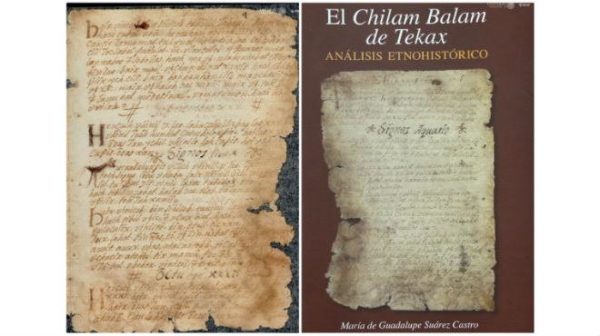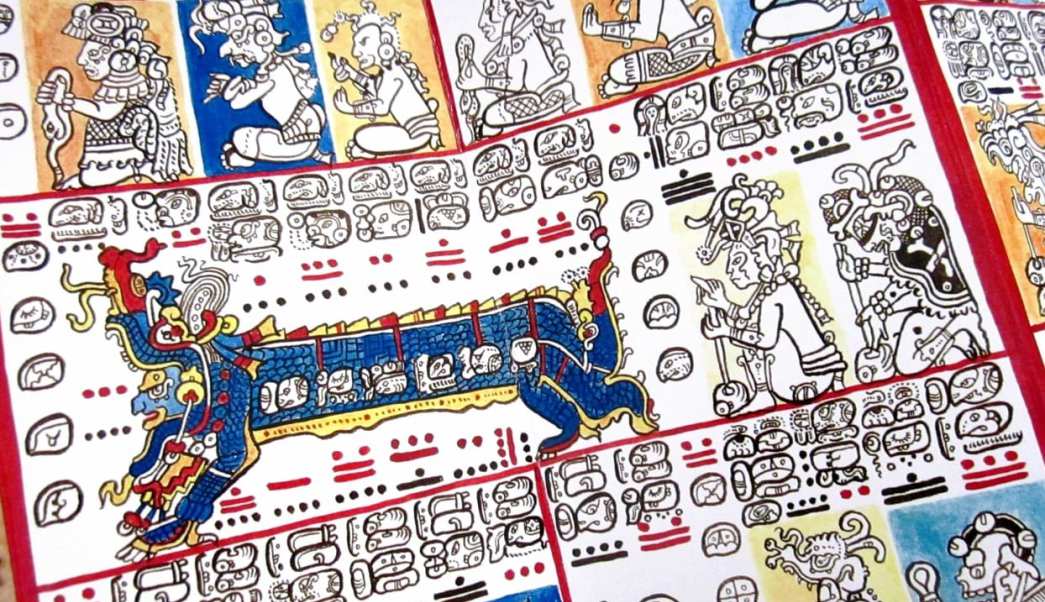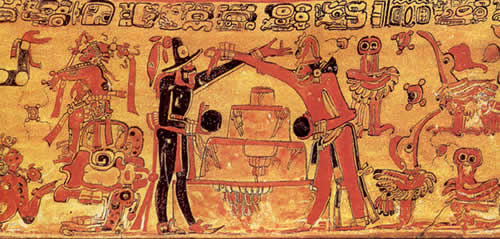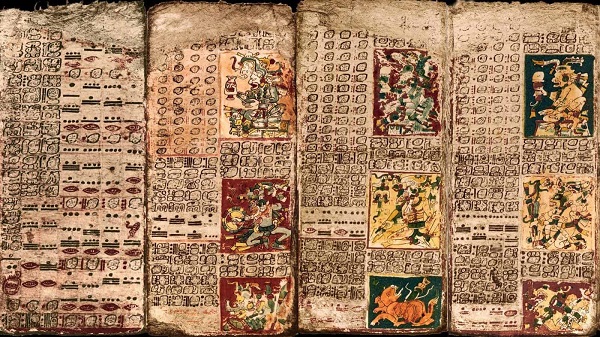Among the manuscripts in Maya language that are protected in the collection of codex property of the National Library of Anthropology and History (Biblioteca Nacional de Antropología e Historia: BNAH), one of the most well known is the Chilam Balam that, according to historiography, consists of prophetic texts written in different communities of Yucatan from pre-Hispanic times until the 19th century.
However, between the earliest and the latest books there are substantial differences, the first ones like the Chilam Balam of Chumayel and the one of Tizimín contain material of historical and prophetic character, on the other hand those of Ixil, Nah, Chan Kan, Tusik and Tekax collect as a whole transcriptions of biblical passages, Spanish poetry and herbal remedies; some present predictions based on the zodiac signs of European astrology, and as a constant they all have a mixed calendar that combines Maya and Christian elements.
Researcher María de Guadalupe Suárez Castro, attached to the Department of Ethnohistory, of the National Institute of Anthropology and History (Instituto Nacional de Antropología e Historia: INAH), interested in the study of the ancient Maya has recovered the history and use of one of these documents to make it known in her book “El Chilam Balam de Tekax“, which is basically an ethnohistorical analysis, that was recently presented at the National Museum of Anthropology, in Mexico City.
According to the ethnohistorian this is the first individual and integral study of the Tekax Chilam Balam, since it had always been worked along with the Chilam Balam of Nah or Na, which was written several years later.
Chilam Balam de Tekax is an anonymous text of 1833, written in Yucatec Maya language with Latin characters, containing a santoral (saints’ day), solar and lunar calendar, astrological predictions according to the signs of the Zodiac and the planets, as well as herbal remedies.
The manuscript consists of 18 pages, but four of them were lost, probably during the journey, since Tekax’s book was moved to the town of Teabo, also in Yucatan, where the Chilam Balam de Nah was written, with many similarities.
Later, at the beginning of the 20th century, it was taken to the United States, where it was part of the collection of William Edmond Gates, a professor specialized in the study of the Maya. However, shortly after Gates passed away, around 1947, the document came back to Mexico, where it entered the BNAH collection as an acquisition for which 500 pesos were paid.
The incomplete original is protected at the BNAH, while the rest of the content is known through reproductions available for consultation in some American libraries, such as Harvard University.
Its writing was in charge of Maya scribes who had access to texts of European origin, within churches, libraries and Franciscan convents; and some of these texts were also found at the Hospital of San Juan de Dios, in Mérida.
“The authors were Maya indigenous people who were part of the system of religious positions in the community, and probably served as teachers of doctrine, sacristans, singers or notaries,” Suárez said.
María de Guadalupe Suárez explained that the document was probably of restricted use and served as a guide or manual: “it was designed to be used by the Ah dzac yah (Maya healers), who were specialists in curing diseases and performing rituals of birth and death among the Yucatec Maya “.
The archeology teacher, who devoted five years of work to the development of the book, said it is the first time that a full investigation of this document is made, since the only thing that existed was a translation made back in 1981.
The book is composed of eight chapters and an appendix. In the first one, the author reflects on the concept of chilan, a character who, before the arrival of the Spanish Conquistadors, had direct communication with the gods through psychotropic substances.
After the Conquest, the Franciscan friars conceived him as the prophet who foreshadowed the arrival of the conquerors and contributed to his evangelizing task; He was no longer the possessor of the word of the gods, but now he was a Christian, who wrote manuscripts known as Chilam Balam.
The second section deals with the history of Tekax, a town located 80 kilometers southeast from the city of Mérida, Yucatán, which main activity was the cultivation of sugarcane. In the third chapter the story of the manuscript written in 1833 is narrated: how it was kept and consulted by the Nah family; how it became part of the the Gates’ collection, and finally, its arrival to the BNAH.
In the fourth chapter, the ethnohistorian makes a description of the materials that were used for its elaboration, such as the paper of Italian origin, the sepia-colored iron-gall ink, the typeface of the text and the headings. In addition of an analysis of the intellectual context of the authors.
The fifth section deals with the content, the sources from which the authors obtained the information and the analysis of the uses and functions of the Chilam Balam de Tekax. The sixth chapter contains the transcription of the complete text of both the original, and the part that is known through reproduction.
In the seventh section, the author offers a month by month relationship in which the differences and similarities between the names of the saints are observed recorded in other manuscripts and in the Chilam Balam de Tekax.
In the last chapter a free version of the text’s translation is presented, in addition to the comparison of the content with some passages of the Repertoire of the Times, by Andrés de Li, work of which the Chilam Balam de Tekax author obtained a good part of her information.
Finally, the appendix brings together a morphological analysis of the entire writing. The book is accompanied by a compact disc containing the digital images of the original manuscript and the remaining four folios, taken from the reproductions that are located Harvard’s University Library.
TYT Newsroom with information from:





